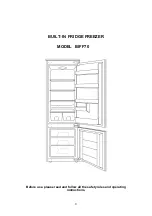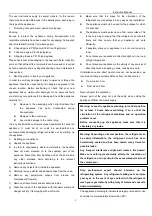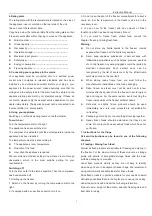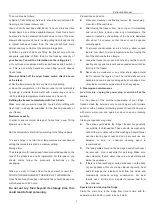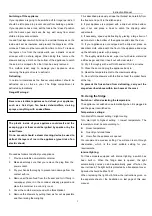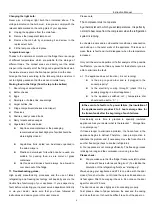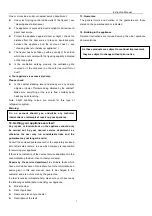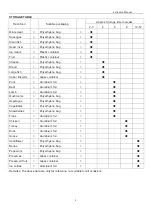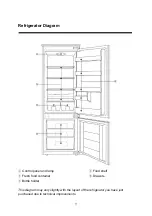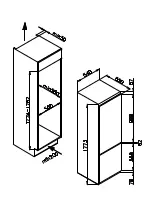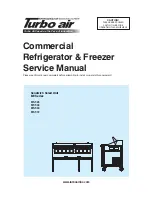
Instruction Manual
5
Switching off the appliance
If your appliance is going to be switched off for longer periods, it
should be left opened to prevent odours from building up inside.
If your appliance has a lock, set the lock in the “closed” position
with the doors open and keep the key well away from small
children to prevent accidents.
Ice and frost layers which build up to a certain thickness on the
inside wall act as insulation and prevent the dispersion of the
coldness. These must be removed from time to time. To remove
the layers of ice from the inside walls, use a plastic or wood
screaper with no sharp edges. When doing this, remove the
drawers and lay a cloth on the bottom of the appliance to catch
the ice as it is scraped off so that it can be easily removed.
The method least likely to damage your appliance when
removing the layers of ice is to defrost it.
Defrosting
In normal circumstances the freezer compartment should be
defrosted once or twice a year. The fridge compartment is
defrosted automatically.
Danger Warnings:
Never use electrical appliances to defrost your appliance,
such as a hair dryer, fan heater, dehumidifiers, de-icing
sprays or anything with a naked flame.
The plastic inside of your appliance could melt and the
escaping gas or foam could be ignited by sparks or by the
naked flame
On no account should a steam cleaning device be used to
defrost the layers of ice in the appliance (great risk of an
electric shock)
Proceed as follows to defrost your appliance
1. Provide a suitable non-metallic container
2. Make absolutely sure that you remove the plug from the
power socket.
3. Dry your hands thoroughly to prevent skin damage from the
contact with ice
4. Remove all frozen food from the freezer and foll it firmly in
newspaper place it in the container already prepared and
place the container in a cool, dry room.
5. Cover the container all around with a thick blanket.
6. Remove the drawers by pulling them as far out as possible
and then raising them slightly.
7. As described previously, scrape the thickest ice carefully from
the freezer and put it in the kitchen sink.
8. If your appliance is equipped with a drip duct at the bottom,
pull it out and place a bowl to catch the dripping water
underneath.
9. If necessary, speed up defrosting by placing a large bowl of
warm water on the bottom of the appliance and close the door.
10. If your appliance is not equipped with a drip duct, place an
absorbent cloth underneath the front of the appliance and wipe
up the defrosting water with a sponge.
11. Thoroughly clean the inside, wipe it out with warm water and
a little vinegar and then rinse it out with clear water.
12. Dry it thoroughly with a soft cloth and air it for 3-4 minutes.
13. Close the door and plug the appliance back in
14. Reset the temperature dial to the maximum setting.
15. Now refill the drawers with the frozen food, the oldest items
at the top.
To prevent the frozen food from defrosting, carry out the
steps described above within two hours at the most.
10. Using the fridge
Switch on / off and selecting the temperature
The appliance is switched on automatically when it is plugged in
and the power is switched on.
Temperature settings:
Turn dial left to Lowest setting = slight cooling
Turn dial right to highest setting = lowest temperature. The
temperature must be set according to :
Room temperature
Quantity of stored foods
How often the appliance is opened
We recommend a medium setting. You will soon learn, through
observation, which is the most suitable setting for your
requirements.
Internal lighting:
For those models equipped with internal lighting, a switch has
been built in. When the fridge door is opened, the light
automatically comes on and automatically goes off when the
door is closed. The light bulb is protected by a transparent cover.
Spare bulb should be Max.15W
When replacing the light bulb, follow the instructions given on
the separate sheet or the illustration on last page of this user
manual.
Summary of Contents for BIFF70
Page 11: ......

